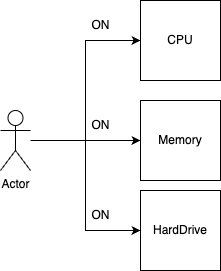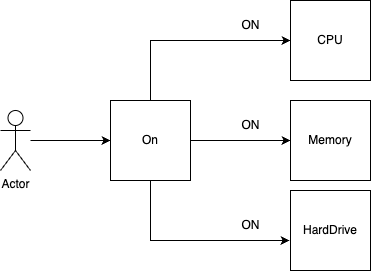In the complex landscape of software development, simplicity is a virtue. The Facade Design Pattern emerges as a beacon of simplicity, providing a unified interface to interact with intricate subsystems. This brief exploration delves into the fundamentals of the Facade pattern, outlining its purpose, applications, and the advantages it brings to streamline software design.
Table of Contents
What?
Facade pattern is a structural design pattern that provides a simplified interface to a complex subsystem, making it easier to use.

Why?
In large and intricate systems, clients may face challenges when interacting directly with numerous components and classes. The Facade pattern acts as a mediator, encapsulating the complexities of the underlying system and presenting clients with a streamlined interface.
In essence, the Facade pattern makes complex systems more manageable and user-friendly by offering a clear and concise entry point for client interactions.
Let’s take an example of a computer system. The subsystem consists of components like CPU, memory, and hard drive. Without a Facade, a client might need to interact with each of these components individually to perform operations on the computer. The Facade pattern simplifies this by providing a single interface that manages the interactions with the subsystem.
Case 1: without facade: To start a computer, the client needs to switch on the CPU, switch on the hard disk and then switch on the Memory.

The same set of steps, we have repetitive every time.
Case 2: We will use a interface to on the computer.

This is the simplicity we can achieve through the facade.
Code
// Subsystem classes
class CPU {
void start() {
// Implementation for starting the CPU
}
void shutdown() {
// Implementation for shutting down the CPU
}
}
class Memory {
void load() {
// Implementation for loading memory
}
void unload() {
// Implementation for unloading memory
}
}
class HardDrive {
void read() {
// Implementation for reading from the hard drive
}
void write() {
// Implementation for writing to the hard drive
}
}
// Facade
class ComputerFacade {
private CPU cpu;
private Memory memory;
private HardDrive hardDrive;
public ComputerFacade() {
this.cpu = new CPU();
this.memory = new Memory();
this.hardDrive = new HardDrive();
}
void startComputer() {
cpu.start();
memory.load();
hardDrive.read();
// Additional steps to start the computer
}
void shutdownComputer() {
cpu.shutdown();
memory.unload();
hardDrive.write();
// Additional steps to shut down the computer
}
}
// Client
public class Client {
public static void main(String[] args) {
ComputerFacade computer = new ComputerFacade();
computer.startComputer();
// ... do some operations ...
computer.shutdownComputer();
}
Real-World Analogy
Imagine entering a modern building with automated systems for lighting, security, and climate control. Without a building management system (BMS), you might need to individually operate various controls for each system. Now, consider the BMS as a real-world analogy to the Facade pattern. The BMS acts as a simplified interface, allowing you to adjust the overall environment without dealing with the intricacies of each subsystem. Just as the BMS hides the complexity of managing individual components, the Facade pattern provides a unified entry point for clients, streamlining interactions with a complex software subsystem.
Use Case of the Facade Design Pattern
Common examples of the Facade Design Pattern can be found in various software frameworks, libraries, and APIs. Here are a few common examples:
- Java Database Connectivity (JDBC): When interacting with a relational database using JDBC, a developer might have to deal with complex operations like opening a connection, creating statements, and managing transactions. JDBC provides a DriverManager class, which acts as a Facade, simplifying database interactions. Developers can use it to obtain a connection without worrying about the details of the underlying database driver and connection management.
- Spring Framework: In the Spring Framework, the JdbcTemplate class serves as a Facade for database operations. It simplifies the process of executing SQL queries and handling exceptions, allowing developers to focus on business logic rather than dealing with low-level database interactions.
- jQuery: In front-end web development, jQuery is a popular library that simplifies DOM manipulation and AJAX requests. It provides a unified interface for handling browser inconsistencies and abstracts away the complexities of interacting with the Document Object Model (DOM). This can be considered a Facade for front-end development.
- Graphics Libraries: Graphics libraries like OpenGL or DirectX often involve intricate configurations and low-level operations for rendering graphics. Game development engines, such as Unity or Unreal, provide a higher-level Facade that abstracts away the complexities of these graphics libraries. Game developers can use the engine’s simplified interface to create complex scenes without delving into the intricacies of graphics programming.
- Operating System Interfaces: Operating systems themselves often utilize the Facade pattern. For instance, the graphical user interface (GUI) of an operating system provides users with a simplified interface to perform tasks, shielding them from the underlying complexities of system calls and hardware interactions.
Benefits of the facade design pattern
- Simplified Interface: One of the primary advantages is the provision of a simplified and higher-level interface to interact with a subsystem. Clients can perform tasks without needing to understand the complexities of the underlying components.
- Decoupling: The facade promotes loose coupling between clients and the subsystem. Clients only interact with the facade, and they are shielded from the details of the subsystem’s implementation. This separation allows for changes in the subsystem without affecting clients.
- Encapsulation: The pattern encapsulates the complexities of the subsystem, providing a clear separation between the external interface and the internal implementation. This encapsulation enhances the modularity and maintainability of the code.
- Improved Maintainability: By simplifying interactions and encapsulating subsystem complexities, the Facade pattern contributes to improved maintainability. Changes to the subsystem can be isolated within the facade, reducing the impact on the rest of the system.
- Promotes Reusability: Subsystem classes can be reused independently of the facade, and the facade itself can be reused in different contexts. This promotes a modular design where components can be employed in various scenarios, leading to more efficient and reusable code.
- Eases Integration: When integrating with external systems, APIs, or libraries, the Facade pattern simplifies the integration process. It acts as a mediator between the client code and the complexities of the external system, making the integration more straightforward.
- Enhanced Testing: Testing becomes more manageable with the Facade pattern. Since clients interact with a simplified interface, unit testing can focus on the facade without the need to test every individual subsystem class separately. This simplifies the testing process and improves overall test coverage.
- Legacy Code Integration: The Facade pattern is useful when dealing with legacy code that may have outdated or complex interfaces. It provides a modern and simplified facade to interact with legacy components, allowing for gradual system improvements.
Conclusion
The Facade Design Pattern stands as a valuable solution to the perennial challenge of managing complexity in software systems. By providing a simplified and unified interface to a subsystem, it eases the burden on developers, making systems more accessible and maintainable. The pattern’s benefits, including decoupling, encapsulation, and improved reusability, make it an essential tool in creating modular and scalable software architectures. Whether applied to database interactions, front-end development, or graphics programming, the Facade pattern empowers developers to navigate intricate systems with confidence, promoting cleaner code and facilitating seamless integration. In the ever-evolving landscape of software engineering, the Facade Design Pattern remains a cornerstone for building robust, adaptable, and user-friendly applications.
Resources
For further exploration, make sure to check out these helpful resources: